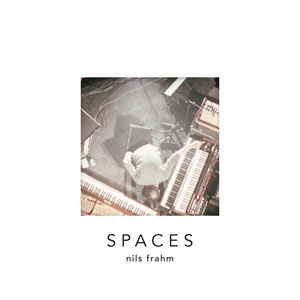Nils Frahm Spaces
Over the past few years, Berlin-based composer/pianist Nils Frahm has gained a very much deserved […]

Over the past few years, Berlin-based composer/pianist Nils Frahm has gained a very much deserved repuatiation as a compelling live performer. In the process, he has helped to rekindle what for many in the electronic-music community was a somewhat dimly lit flame for modern classical compositions. Offering recordings from a variety of Frahm’s live performances captured over the past two years, Spaces accurately reveals him to be not only an extremely talented pianist, but also a performer who’s able to adapt to his surroundings with grace and purpose. Still, hearing Frahm’s performances after the fact does not prove to be quite as spellbinding of an experience as watching the man live, making Spaces a record that will no doubt appeal to the musician’s existing fans, but may not necessarily be the best place to start for those new to his sound.
It’s hard to put this any other way: Nils Frahm makes powerfully beautiful music. Whether utilizing a piano (sometimes prepared and usually manipulated with the use of electronics), synthesizers, or (as on Spaces‘ closing track) a harmonium, Frahm has an effortless command of the keyboard, which he uses to build endlessly immersive compositions that blend his virtuosic ability with a balanced approach to tonal color and melodic space. “Says,” the album’s second cut and first full effort, is one of the best examples of the Berliner’s abilities. Referred to in the liner notes by Frahm as a “a meditation over a repeating pattern on my synthesizer,” “Says” places sparse piano trickles over a continuously flowing synth arpeggio. After simmering for its first five minutes, the track beings to push its limits, adding a slight singe to the main arp as the rest of the track’s elements come together to create a smoky, melodic blur that is simply intoxicating.
To his credit, Frahm rarely repeats himself on Spaces—”Said And Done” piles layers of rhythmic piano together in a Reich-like piece; “Familiar” sinks into a gloomy piano performance which gracefully revolves around a single repeating theme; “Hammers” finds Frahm utilizing his control of the piano to briskly execute an impossibly fast and brooding piece; and the closing “Ross’s Harmonium” shows that Frahm is truly able to adapt to most any situation, as the album’s liner notes explain that this piece was performed at an “intimate house concert” where there was an “amazing harmonium” for him to use. Individually, each recording selected for Spaces is undeniably immersive, but when brought together, the album struggles to be a cohesive listen. Considering all these recordings were taken from a live situation, it may have been impossible to remove the applause that wraps up songs like “Says,” “Hammers,” and others, but the presence of a recorded audience does account for a bit of a jarring experience in the course of listening to the album. Frahm’s pieces here are so intimate and solitary in their tone that it’s easy for the listener to feel like they’re alone with the pianist himself, but the abrupt presence of a clapping audience ultimately disrupts that rewarding headspace far too often on Spaces.
In the end, Spaces is still a wonderful document of the powerful force that Nils Frahm is as a performer. At the same time, the album in some ways seems like a missed opportunity—no one has questioned the man’s ability as a live act (quite the opposite, actually), so the record can’t help coming off like a bit of a “gimme.” In a few short years, Frahm has garnered an audience that truly trusts his vision, but they will have to continue to wait to see that vision expand and evolve—in recorded form at least—until Frahm is ready to deliver another studio album.

